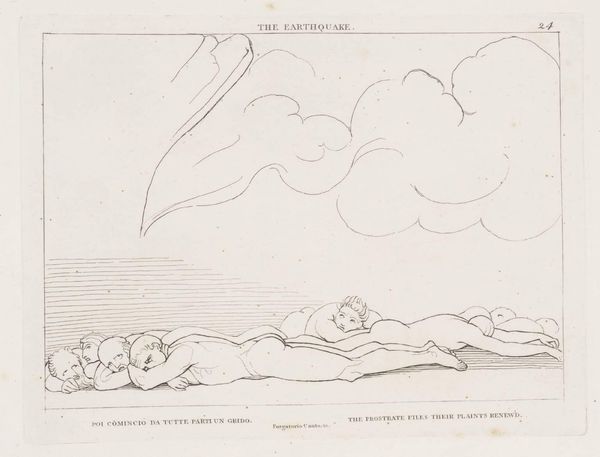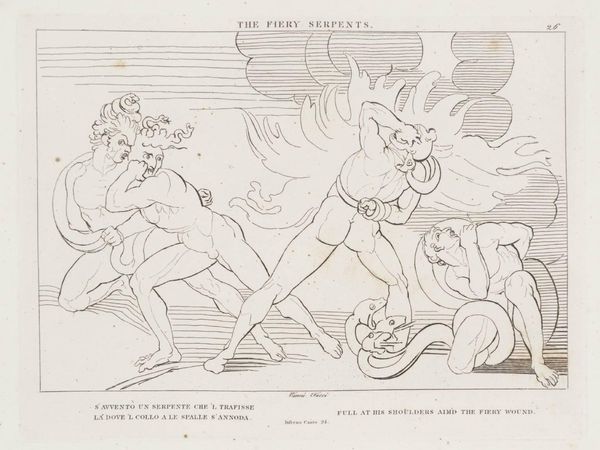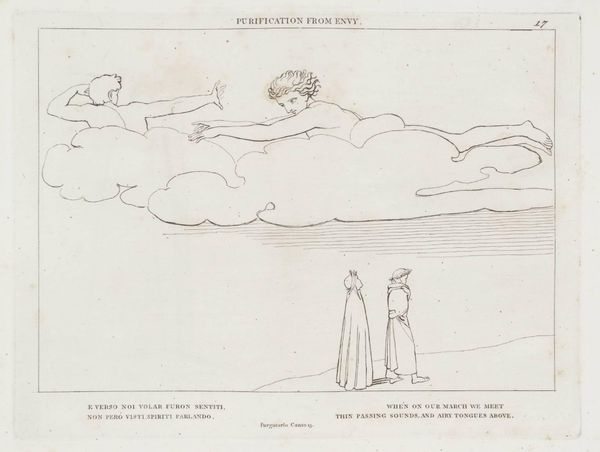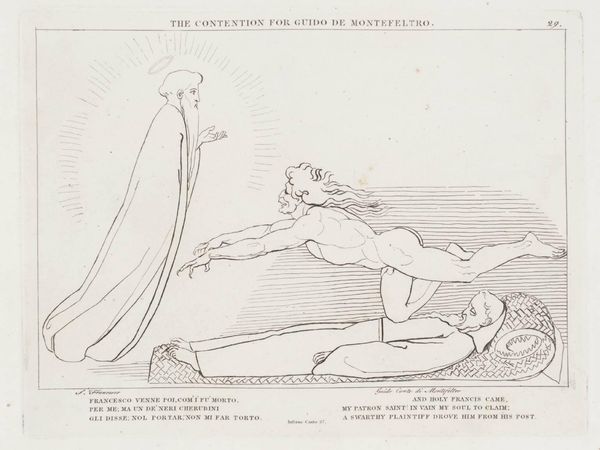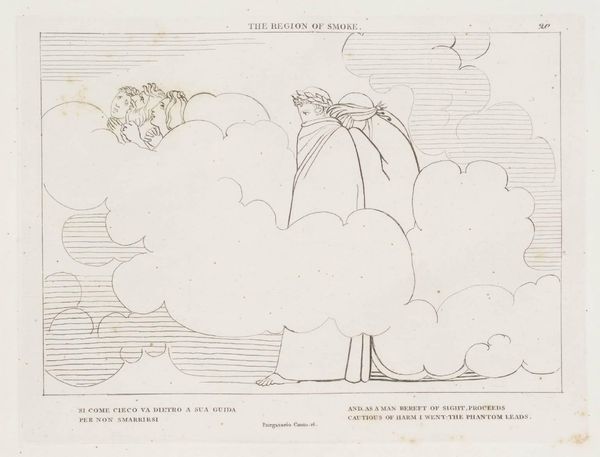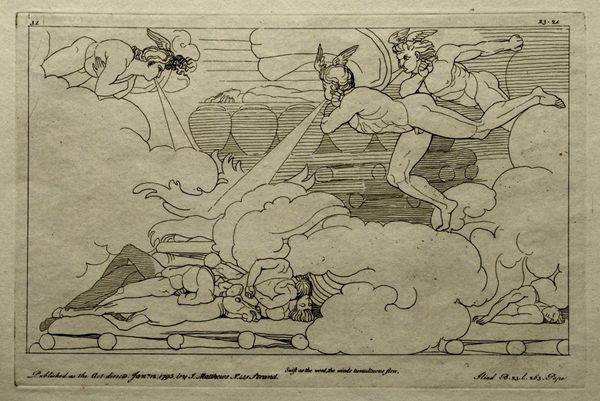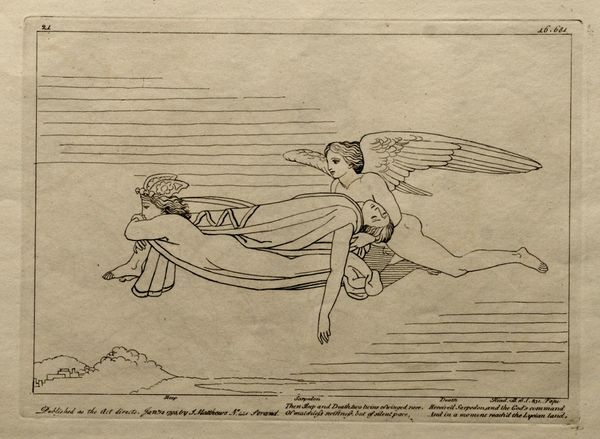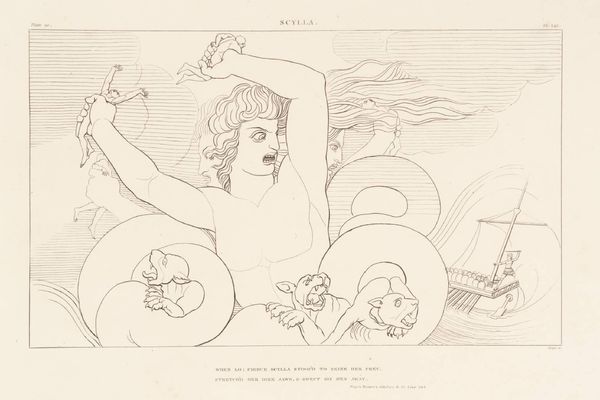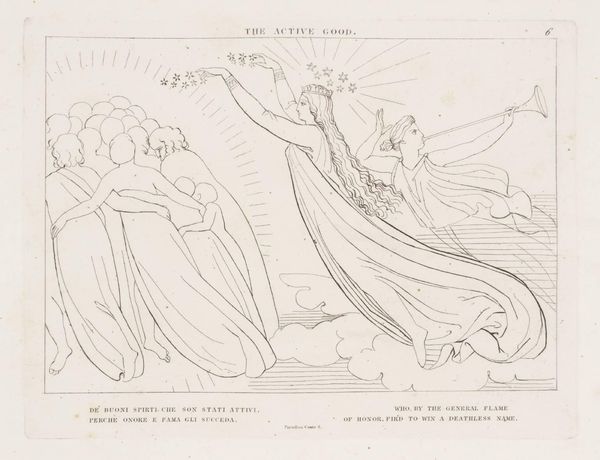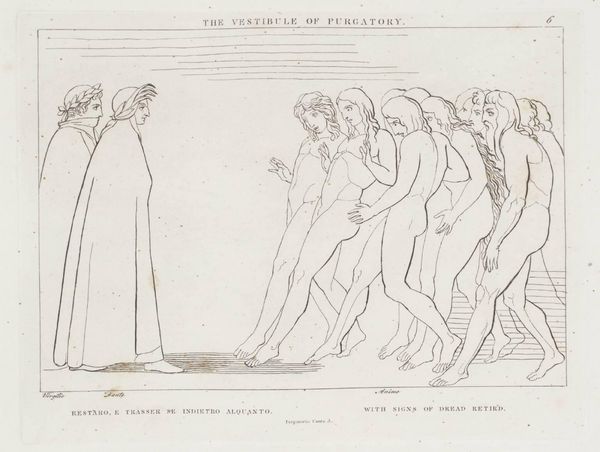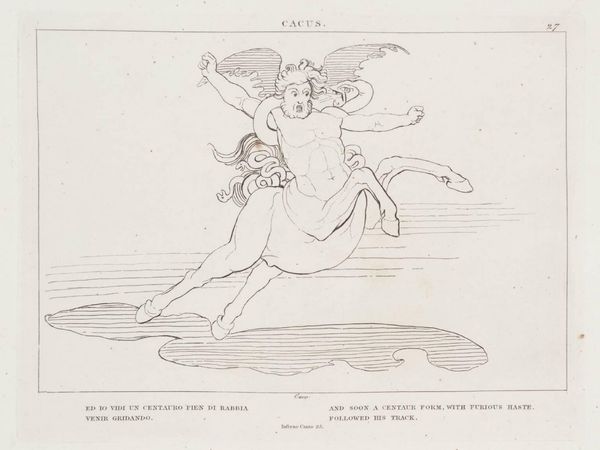
Dimensions: image: 134 x 191 mm
Copyright: CC-BY-NC-ND 4.0 DEED, Photo: Tate
Curator: John Flaxman created "The Terrors of Guilt," a small-scale print now held in the Tate Collections. Editor: The overwhelming feeling is dread. The figures are rendered with such stark lines, it's as if their fear is etched into the very paper. Curator: Flaxman often turned to classical literature and mythology, using simplified forms to convey intense emotional states. Guilt is a potent cultural force. Here we can see this concept embodied in the avenging sword. Editor: The composition is fascinating. There's a clear visual hierarchy, the threatening figure dominates the upper register, looming large over the huddled figures below. The starkness of the lines almost feels like a diagram of suffering. Curator: Yes, Flaxman uses classical imagery to explore universal themes of human suffering and punishment. The sword of divine retribution is a recurring motif in Western art, embodying the psychological weight of wrongdoing. Editor: The small scale is interesting, though. It invites intimacy, a closer look at the anatomy and the composition as a whole. Curator: Flaxman aimed to capture a precise emotional truth. Seeing this piece reminds us that guilt's terrors are often self-inflicted, a kind of internal purgatory. Editor: It's a spare, intense piece, compelling in its starkness and emotional resonance.
